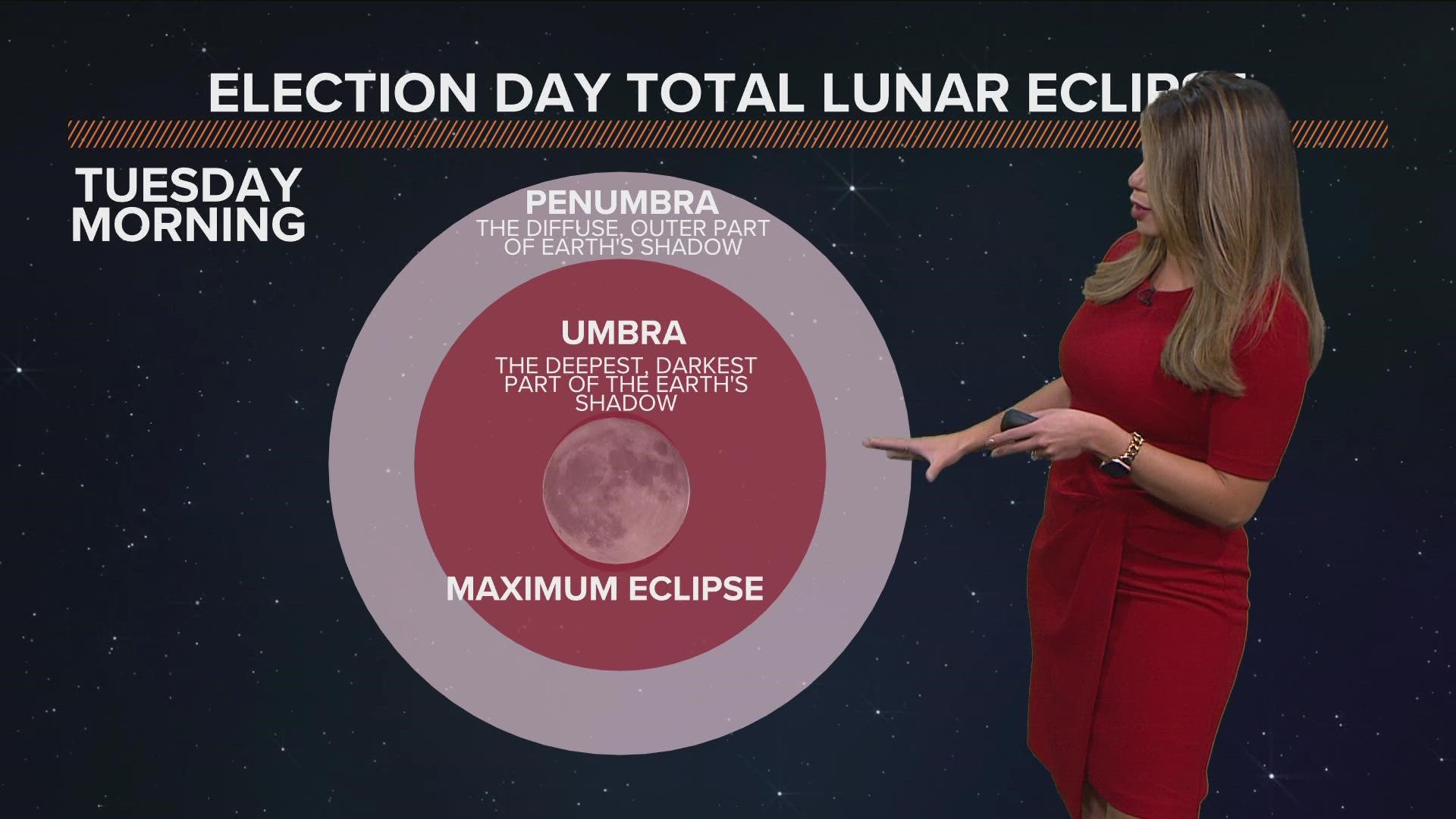DALLAS — Be ready to watch a total lunar eclipse early Tuesday morning! This will be the last one until March 2025, with the exception of partial eclipses in 2023 and 2024.
Total lunar eclipses, also known as "blood moons," take place when the sun, earth and moon line up. This puts the moon in the earth's shadow giving it a reddish hue and also the reason behind the blood moon name.
Since the eclipse happens in November, it also takes on the name for the November full moon: The Beaver Moon.
Where will it be visible
This eclipse will be visible across all of North America, Central America, the Pacific, Australia and Asia. As long as the moon is above the horizon during the eclipse, you can see it!
When does it happen
The moon will start hiding behind the moon around 2:02 am. Dallas time. It'll enter the umbra or Earth's deep shadow at 4:17 am. Slowly, the total eclipse will peak near 4:59 am. This is when the reddish hue will be most noticeable. The total eclipse will last about eighty-five minutes and best viewed between 4:17 am and 5:42 am.


How to view
Good news: no binoculars are needed. If binoculars are at hand, it'll be even more spectacular to spot. For ideal viewing, find a place away from the city lights and give your eyes some time to adjust to the darkness. If being outdoors is not accessible, there are lots of online streams to watch.
Will we be able to see it?
While it could be partly cloudy in North Texas on Tuesday morning, it won't be as cloudy as we saw Monday morning.
Why is the moon red?
During a lunar eclipse, the sun, earth and moon line up. With earth in the middle of the line, it hides the moon from direct sunlight. Even with this happening there is still a little bit of scattered light from the sun that reached the moon, it is simply going through the earth's atmosphere first. More clouds and dust in the atmosphere make for a more reddish-looking moon.



